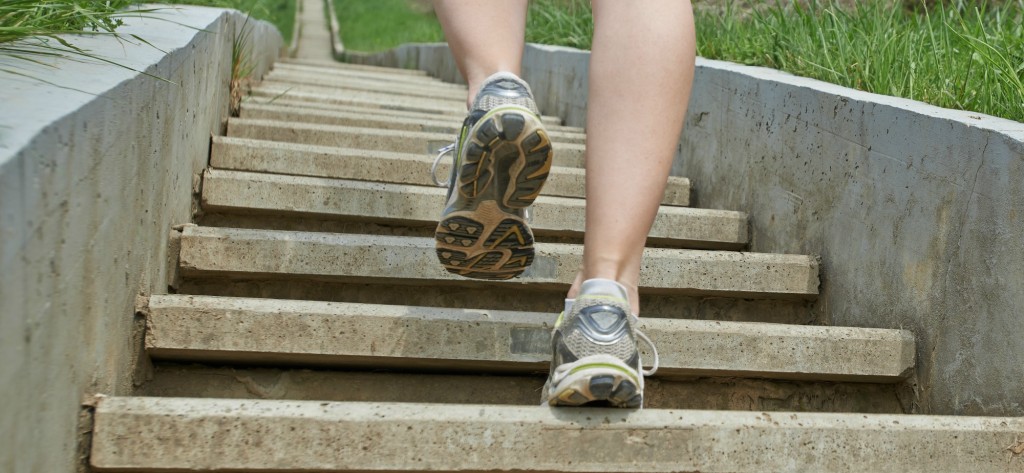In 2018 the World Health Organisation (WHO) launched a global action plan to promote physical activity (GAPPA) to reduce physical inactivity by a relative 10% by 2025, and 15% by 2030 [1]. Despite member countries adopting GAPPA, it is unlikely that physical inactivity prevalence will decrease in the absence of determined action. Recent data from 168 countries revealed, that if current trends continue the GAPPA physical activity (PA) targets will almost certainly not be met (Figure 1). Although high income countries (HICs) have a higher physical inactivity prevalence, low-income and middle-income countries (LMICs) still bear the larger share of the global disease burden of physical inactivity [2]. Middle income countries represent one third of global Gross Domestic Product, 75% of the world’s population and 62% of the world’s poor [3]. The updated 2020 WHO global physical activity and sedentary behaviour guidelines [4] were developed to serve all populations and, in particular, LMICs where capacity to undertake such larger scientific efforts is more limited. Now, national policies and action to increase population levels of physical activity at LMICs need to be prioritised and scaled up urgently while understanding the driving forces, socio economic, cultural, and commercial determinants specific to them.

These new guidelines are highly relevant to clinicians in LMICs, who are important driving agents for PA promotion.
Different political and “healthcare” priorities in LMICs influencing clinical practice
Clinicians have a considerable opportunity over repeated interaction with patients and their families to prescribe PA to prevent and manage the rising non-communicable diseases (NCDs). Governments and primary healthcare services in LMICs are constantly challenged to provide other basic needs to their populations, where overall healthcare receives a lower proportion of investment (both human and infrastructure) compared to HICs [5]. The high infectious and non-communicable disease burden and the low density of skilled healthcare professionals per capita pose considerable competing demands on clinicians’ time and resources driving them more towards managing acute medical and life threatening conditions. Such circumstances invariably lead to less time for PA promotion. Clinicians in LMICs need simple, practical solutions were all healthcare workers can join in to promote PA.
What the clinicians can do?
WHO global PA guidelines clearly promote multi-domain physical activity including work, transport, and leisure time physical activity (LTPA; e.g., sports, active recreation). LTPA has become the focal PA promotion domain globally. Conditions in most LMICs do not yet support this domain since the sports infrastructure (e.g. gymnasiums, community centres) and urban infrastructure (e.g. safe walking paths/parks), trained staff and systems (flexible working hours by provided by employers to accommodate workplace LTPA) are poorly developed and often unequally distributed. The lifestyles of the majority of the working age population in LMICs involve large proportions of daily time spent on non-recreational PA, i.e. activity at work, for transportation, and in the domestic setting [6].
While policies to improve facilities and prescribing LTPA are a long-term (and not easily attainable) goal, clinicians in LMICs could,
1) be physically active by own example using existing resources and become role models to the public to adopt active lifestyles.
They can 2) recommend and promote ‘shorter sessions’ of physical activity at workplaces and during transport (recommend short aerobic sessions at workplace, being active in different ways – more walking and using stairs), which is an important aspect of the updated WHO recommendations that now assigns “health value” to PA bouts of any duration [4].
3) Advise on reducing ‘sitting time’ and helping to creating active workplaces will be essential as the sociodemographic transition is leading to an increase in sedentary occupations in LMICs [7] as ‘avoiding sedentary behaviour’ is a new updated guideline.
Training added to all medical and health curricula
Effective PA promotion relies on healthcare professionals having appropriate levels of knowledge and skills to support PA behaviour change [8]. PA prescription training in undergraduate medical curricula is almost non-evident in the LMICs [9, 10]. Despite many countries incorporating PA promotion within their national NCD prevention policies, and many professional medical and public health associations endorsing it; the integration into medical and health professional training to ensure future health care professionals receive adequate training still seems far from reality. Leadership will be needed from the medical schools to incorporate exercise prescription training to the curricula, particularly during training on prevention and management of non-communicable diseases and health promotion. They may initially face difficulties due to less availability of trained experts to teach. Starting even basic training to undergraduates and practicing clinicians is essential, where gradual improvement can be planned by the experts of the future [10].
Clinician as the forerunner of PA promotion
The new WHO global guidelines make it timely for healthcare professionals and professional clinical associations to take leadership in using the most current evidence of the recommendations and customising them to the, culture, ethnic diversity, and social norms of their own countries (Figure 2). For example, initiatives like ‘Exercise is Medicine (EIM)’ by American College of Sports Medicine (ACSM) and similar initiatives have made a positive impact on PA promotion globally [11] involving all clinicians, and has increased training opportunities on exercise prescription. Similar culturally acceptable initiatives in LMICs can become focal points for all clinicians in different specialities to rally around and take leadership to promote PA.
Conclusions and way forward
LMICs are set to experience an increasingly large health burden due to physical inactivity. The relevance of the updated 2020 global guidelines to the clinicians, as potential driving force for PA promotion, is perplexed by different health and economic priorities, (lack of) infrastructure and competing demands on time and resources. Simple, cost effective, practical solutions driven by clinicians ( i.e. Being active by own example, promoting short sessions of activity in verity of ways and reducing sitting time) would be more relevant to LMIC settings to promote PA . Future clinicians will need formal training on PA prescription which need to be included to undergraduate and in-service medical curricula. Clinicians and professional bodies could customise the up-to-dated knowledge to their county context, while coordinated action of all will be essential for achieving the GAPPA targets in LMICs.

Author and Affiliations:
Chathuranga Ranasinghe, MBBS ,D.Sp.Med. ,PhD
Senior lecturer and Specialist in Sports and Exercise Medicine
Sports and Exercise Medicine Unit and Department of Allied Health Sciences
Faculty of Medicine, University of Colombo, Sri Lanka.
Chairperson, NIROGI Lanka Project, Sri Lanka Medical Association.
No: 25 Kynsey Rd, Colombo 00800, Sri Lanka.
Email: chath_r@med.cmb.ac.lk
Office+94 112 688686, Mobile + 94 773707016
References:
- Global action plan on physical activity 2018–2030: more active people for a healthier world. . 2018;Licence: CC BY-NC-SA 3.0 IGO.
- Guthold R, Stevens GA, Riley LM, Bull FC. Worldwide trends in insufficient physical activity from 2001 to 2016: a pooled analysis of 358 population-based surveys with 1.9 million participants. The Lancet Global Health. 2018;6(10):e1077-e86.
- Program. MIC. The World Bank in Middle Income Countries. The World Bank.1818 H St., N.W. Washington, DC .USA2020 [updated November 2019. Available from: https://www.worldbank.org/en/country/mic/overview#1.
- Fiona C. Bull SSA-A, Stuart Biddle, Katja Borodulin, Matthew P. Buman, Greet Cardon,Catherine Carty, Jean-Philippe Chaput, Sebastien Chastin, Roger Chou, Paddy C. Dempsey, Loretta DiPietro, Ulf Ekelund, Joseph Firth, Christine Friedenreich, Leandro Garcia, Muthoni Gichu,Russell Jago, Peter T. Katzmarzyk, Estelle Lambert, Michael Leitzmann, Karen Milton, Francisco B. Ortega, Chathuranga Ranasinghe, Emmanuel Stamatakis, Anne Tiedemann, Richard P. Troiano,Hidde P. van der Ploeg, Juana F. Willumsen. World Health Organization 2020 Guidelines on Physical Activity and Sedentary Behaviour. British Journal of Sports Medicine. 2020;in Press.
- Organization WH. World Health Organization Global Health Expenditure database WHO; 2020 [updated 15.09.2020. Available from: https://apps.who.int/nha/database.
- Lear SA, Hu W, Rangarajan S, Gasevic D, Leong D, Iqbal R, et al. The effect of physical activity on mortality and cardiovascular disease in 130 000 people from 17 high-income, middle-income, and low-income countries: the PURE study. The Lancet. 2017;390(10113):2643-54.
- Bank W. World Development Report 2019: The Changing Nature of Work. Washington, DC: World Bank.; 2019.
- Lion A, Vuillemin A, Thornton JS, Theisen D, Stranges S, Ward M. Physical activity promotion in primary care: a Utopian quest? Health promotion international. 2019;34(4):877-86.
- Dacey ML, Kennedy MA, Polak R, Phillips EM. Physical activity counseling in medical school education: a systematic review. Med Educ Online. 2014;19:24325-.
- Noormohammadpour P, Halabchi F, Mazaheri R, Mansournia MA, Alizadeh Z, Seif Barghi T, et al. Designing and implementing a curriculum for Sports and Exercise Medicine elective course for undergraduate medical students of Tehran University of Medical Sciences. British Journal of Sports Medicine. 2019;53(10):601-4.
- Lobelo F, Stoutenberg M, Hutber A. The Exercise is Medicine Global Health Initiative: a 2014 update. British Journal of Sports Medicine. 2014;48(22):1627-33.